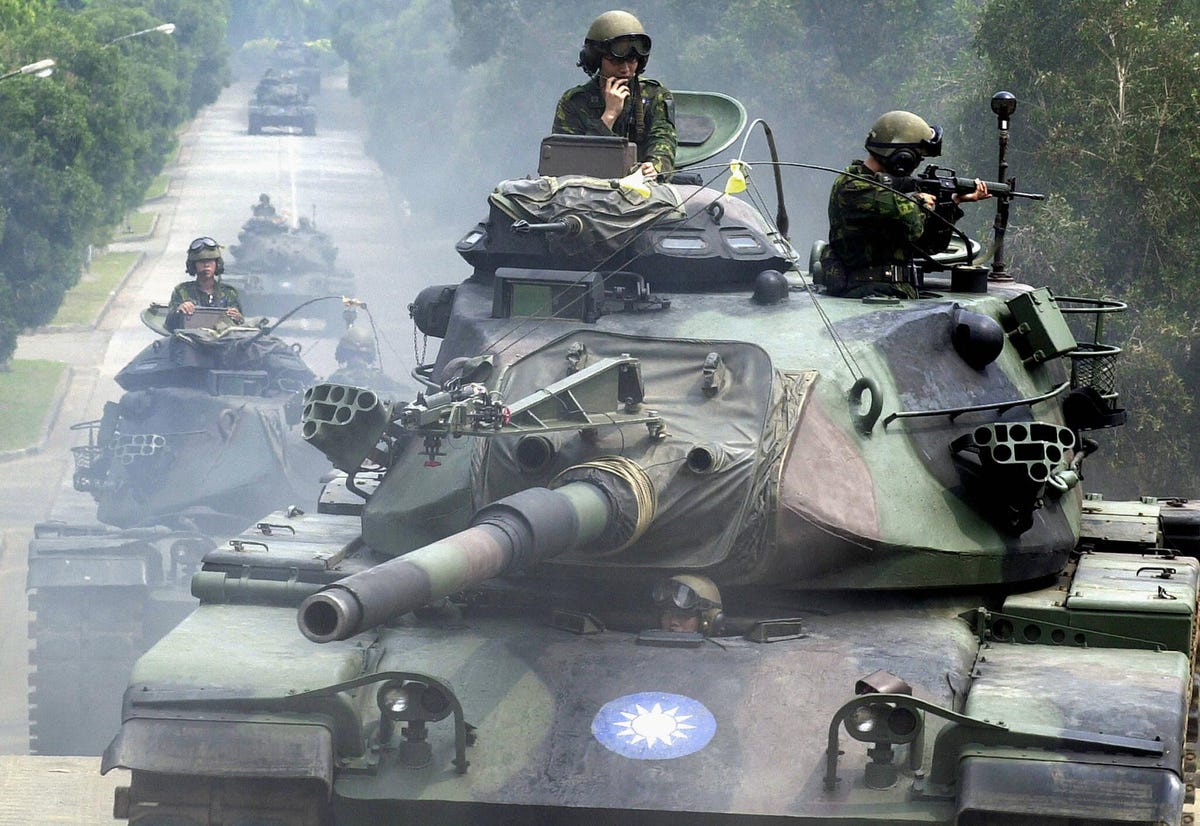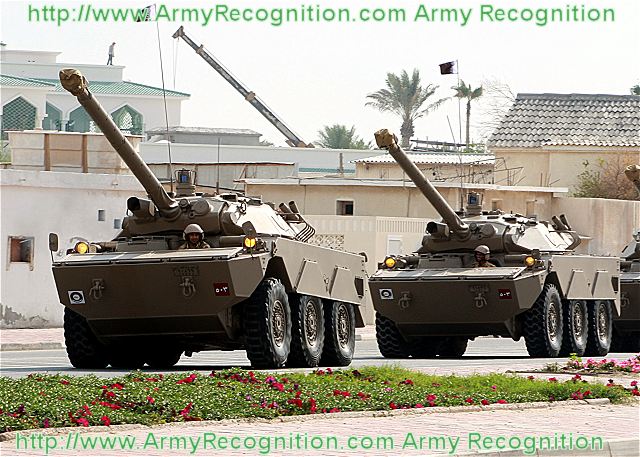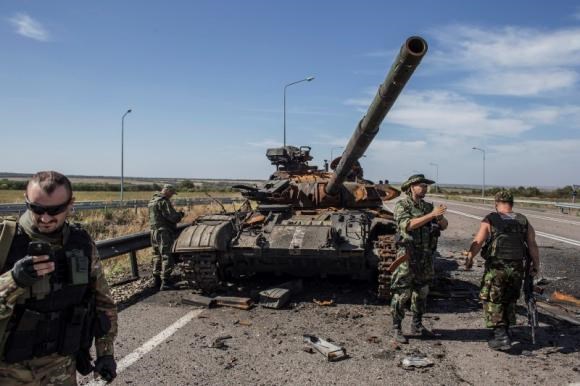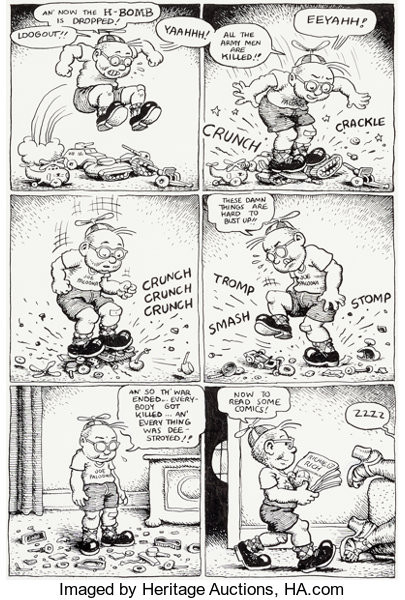
It has been said often over the past year, most recently by Emmanuel Todd, that the conflict in Ukraine is “existential” for Russia.
Certainly, the Great Bear cannot abide a NATO ballistic missile launchpad just 300 miles from Moscow in a country run my rabidly-Russophobic Nazis — not neo-Nazi skinhead cosplayers but the literal descendants of the real deal.
But others have argued that the Special Military Operation (SMO) is also a make-or-break roll of the dice for NATO and the US which dominates it. How else can we explain the latest mania for arming the regime in Kiev just as its ‘Siegfried Line’ in the Donbass starts to crumble?
How else can one explain cry-bully US National Security Spokesman John Kirby’s response to news that Russian Wagner ‘private military company’ had liberated the town of Soledar, a keystone of the Ukrainian defences? He simultaneously tried to cast doubt on the facts while claiming the town’s capture was strategically insignificant.
“We don’t know his it’s gonna go, so I’m not going to predict failure or success here,” Kirby said as Wagner were mopping up stranded Ukrainian conscripts.
“But even if both Bakhmut and Soledar fall to the Russians, it’s not going to have a strategic impact on the war itself, and it certainly isn’t going to stop the Ukrainians or slow them down in terms of their efforts to regain their territory.”
To the contrary, reports indicate that several Ukrainian brigades being concentrated for a southward push on Melitopol, near the narrow isthmus to the Crimea, were redeployed to Donbass in a vain attempt to hold Soledar and Bakhmut, where they suffered huge casualties.
Taking Bakhmut could allow the Russian forces to ‘roll up’ the Ukrainian line to the north and south and advance on Kramatorsk and Sloviansk, the last two major cities Ukraine holds in Donetsk.
Moscow has repeatedly said there can be no peace while the West keeps pumping arms into Ukraine. The most obvious interpretation of those statements is that NATO is only prolonging the suffering of the Ukrainian and Donbass peoples with its cornucopia of death.
But another is, as blogger Andrei Martyanov said recently, that the ultimate end of the SMO is not just to de-militarise (and de-Nazify) the Ukraine, but all of NATO too.
Indeed, Ukrainian Defense Minister Oleksii Reznikov said in a January 6 TV interview that his country was already a “de facto” member of NATO, and that he had been thanked by unnamed Western politicians for fighting Russia on their behalf to defend their imperialist idea of exclusive “civilisation”.
I wrote last August that only NATO could de-militarise itself, and then asked in September if the Ukraine was doing the same. Now seems a good time to take stock of that.

A Farewell to (NATO) Arms
Western aid to the Ukraine since the start of the SMO — arms supplies and payments for fighting the war on NATO’s behalf — has long since exceeded Russia’s 2022 defence budget of around $75 billion, and even its projected 2023 spend of $84 billion.
It’s widely recognised that the Russian arms industry gives you more ‘bang for your buck’, but the disparity has become stark.
On December 22, 2022, Russian Chief of the General Staff, Army General Valery Gerasimov said: “Since the beginning of the special military operation, the West has delivered to Kiev a total of four aircraft, more than 30 helicopters, over 350 tanks, about 1,000 armoured combat vehicles, at least 800 armoured vehicles, up to 700 artillery systems, 100 MLRS [multiple-launch rocket systems], 130,000 anti-tank weapons, more than 5,300 MANPADs, and at least 5,000 UAVs for various purposes.”
Russia’s initial estimate of Ukrainian military strength included 2,416 armoured fighting vehicles — probably about 800 main battle tanks (MBTs) along with 1,600 infantry fighting vehicles (IFVs) and armoured personnel carriers (APCs) — 152 fixed-wing combat aircraft and 149 helicopters, 180 medium- and long-rang surface-to-air missile (SAM) systems, 1,509 artillery guns and 535 MLRS.
Various Western ‘military analysis’ sources say Ukraine had a lot more tanks and artillery to begin with, although those figures includes mothballed vehicles and guns that would have to be overhauled — while Russia continues to hit repair workshops with its long-range missiles.
In mid-June 2022, Ukrainian Deputy Defence Minister Denys Sharapov admitted that his army had lost around half its heavy equipment: 400 tanks, 1,300 IFVs and 700 artillery.
At the end of August, the Ukrainian army launched its counter-offensive in the Kherson region. Just three weeks in, on September 21, Russian Defence Minister Sergey Shoigu said his forces on that front had destroyed “208 tanks and 245 infantry fighting vehicles, 186 other armoured vehicles, 15 aircraft and 4 helicopters.”
Those losses continued to mount until Russia pulled back across the Dnieper river from the city of Kherson in November 2022. The final tally was around 1,200 armoured vehicles of all types, 40 artillery pieces, 38 aeroplanes and a dozen helicopters.
As of January 14 2023, the Russian Ministry of Defence (MoD) claims to have destroyed more than 7,500 armoured fighting vehicles of all types, 372 planes and 200 helicopters, 400 SAM systems, 982 MLRS, more than 3,800 self-propelled and towed artillery and 8,000 soft-skinned military vehicles, which include civilian-model trucks and cars.
More specifically, Russia says it has hit at least 31 of the 38 M142 HIMARS MLRS launchers pledged by the US, plus six of the 13 M270 tracked MLRS, of the same nine-inch calibre, donated by the UK, Norway, Germany and France. Also on the clobber list are 122 of the 152 US-made M777 howitzers supplied — 80 per cent of them.
The MoD claims may be exaggerated. But, as The Saker blog points out, even if you halve those numbers then the Ukrainian armed forces are still on the verge of being completely ‘de-militarised’.
The arsenals of NATO’s eastern and southern European members have been scoured for Soviet-made arms and vehicles that the Ukrainian forces already operate and for which they have ammunition and spare parts.
As it turns out, Poland has one of the biggest armies in Europe. It has already supplied, among other things, at least 230 MBTs to Kiev, all variants of the T-72. Warsaw has also sent about 40 IFVs, 72 self-propelled 155mm howitzers, 20 122mm SP howitzers and 20 MLRS.
If, as some suspect, the defence ministry in Warsaw actively encouraged the thousands of serving soldiers to have gone to fight in the Ukrainian ‘Foreign Legion’, Poland has lent its very flesh and blood to the Kiev government.
But the cherry on the cake, announced by Polish President Andrzej Duda on a visit to Ukraine’s Volodymyr Zelensky in Lvov, the western Ukrainian city Warsaw still covets, was “a company of Leopard tanks” — 10 to 14 in layman’s terms — which he hoped would be just the start of a new wave of largesse from the “international coalition.”
British Defence Secretary Ben Wallace confirmed on Monday January 16 that the UK was adding a squadron (company) of 14 Challenger 2 MBTs, 24 AS90 155mm SP guns plus an unspecified number of Bulldog APCs and “proected” (i.e. not really armoured) vehicles to the pile of chips on the Ukraine-shaped card table. Rumours of four AH-64 Apache helicopter gunships to follow had been swiftly denied over the weekend.
These tanks have been out of production since 2002 and the British army has just 227 of them. 148 of those are earmarked to be upgraded to the proposed ‘Challenger 3’ standard, although Wallace said that number could be increased — with the implication that there would be fewer to spare.
The UK only had 117 AS90s in service as of 2015 and its replacement is still in development, so that pledge represents a fifth of the army’s tracked artillery.
In a leaked internal memo, British Chief of General Staff Sir Patrick Sanders admitted that “giving away these capabilities will leave us temporarily weaker as an army, there is no denying it.”
France has volunteered an unclear number (reportedly 30) of its AMX 10 RC wheeled, turreted vehicles. These have been variously described as “light tanks”, “tank destroyers” or “armoured recce vehicles”, he last reflecting how the French army actually use them. They’re certainly no match for a real MBT.

Marder, She Wrote
The Polish, British and French pledges of token numbers of tanks are explicitly a political move to pressure other countries, especially Germany, to hand over some — or many — of their own. US President Joe Biden already managed to twist German Chancellor Olaf Scholz’ arm in the first week of January to give up 40 Marder IFVs by pledging 50 US M2 Bradley IFVs as well.
The ultimate humiliation for Berlin was that the White House announced the move before the German government did. Meanwhile, the new Puma IFV (named after a WWII Nazi armoured car) that is meant to replace the Marder has turned out to be a complete disaster that constantly breaks down.
The German defence minister Christine Lambrecht resigned on January 16 — ostensibly for failing to fix the equipment shortage, but also, paradoxically, amid criticism that she has not handed over enough arms to Kiev.
Germany is the biggest European importer of Russian gas and has been reticent to antagonise Moscow too much. It is not lost on the Germans that the last time their tanks were in Ukraine was when the Wehrmacht was perpetrating the genocide of 21 million Soviets.
Polish Prime Minister Mateusz Morawiecki was in Berlin on Monday in a bid to unlock that Pandora’s box, arguing NATO should not let tanks “rust away in the warehouses.”
Of course, Russia’s approach since WWII of stockpiling old equipment, rather than scrapping or selling it, has been key to its ability to sustain high-intensity combat operations this long.
London also pressed Berlin to grant other countries permission to re-export the tanks it has sold them in the past.
“It is hoped that the example set by the French and us will allow those countries holding Leopard tanks to donate as well. I would urge my German colleagues to do that,” Wallace said, then claimed: “These tanks are not offensive when they are used for defensive methods.”
The Leopard 2 also massively out-sells the much-vaunted US M1 Abrams and the Challenger 2 on the export market. 21 countries have bought the German tank, compared to just eight for the Abrams and only one, Oman, for the Challenger 2.
Social media videos of burnt-out and turret-less Leopards strewn across the Ukrainian steppes will really mess up German heavy industry’s bottom line. After the Nord Stream pipeline sabotage and the US ‘Inflation Reduction Act’, this would be the third time Berlin has been screwed by its so-called allies.
German tank-maker Rheinmetall’s CEO Armin Papperger tried to head off that outcome on Sunday. He told reporters that Germany could only spare 22 Leopard 2s for Ukraine, and no earlier than 2024. “The vehicles must be completely dismantled and rebuilt,” Papperger stated. The fighting could very well be over by the time they’re fixed.
Scholtz tried to put the ball back in Washington’s court on January 17. “We are never going alone, because this is necessary in a very difficult situation like this,” he said, reiterating that he was anxious to avoid “escalating” the conflict to “a war between Russia and NATO.”
Vice-Chancellor Robert Habeck more explicit, telling a journalist at the World Economic Forum in Davos the same day: “If America will decide that they will bring battle tanks to Ukraine, that will make it easier for Germany.”
The Pentagon’s excuse for not giving some of its stock of more than 6,000 M1 tanks (compared to Germany’s 300-odd Leopards) to the Ukraine is that they are high-maintenance, voracious gas-guzzlers, even by tank standards, and are fitted with technology that they can’t afford to let fall into Russian hands.
But the US has previously exported ‘Nerfed’ versions of the Abrams to several Middle-Eastern countries without the depleted uranium armour inserts and other top-tier systems. The problem is that they turned out to be quite vulnerable.
Many announcements of arms deliveries to the Kiev regime so far have been short on specific numbers. One might speculate that is either because they are embarrassingly small, or because they mean disarming the donor country. Both can be true at once.
For example, Italy’s latest mooted donation is a SAMP-T surface-to-air missile (SAM) battery. Given that the Ukraine started the conflict with 250 long-range S-300 SAMs systems and hundreds of other types, one more is not going to make any difference to the outcome — nor the two Patriot SAM batteries prmised by the US and Germany.
But the Italian army only has five SAMP-T systems, and two of those have already been deployed abroad in Kuwait and Slovakia.
Sweden and Finland are not even in NATO yet, and may never be while they both continue to harbour hundreds of Kurdish separatist terrorists wanted in Turkey, which as an existing member has a veto on their entry.
But Stockholm may send up to 12 of its 48 Archer self-propelled howitzers to the Ukraine, while Helsinki has already supplied ‘classified’ numbers of APCs, heavy mortars and anti-aircraft guns.
Little Slovakia made headlines last summer when promised Kiev 11 MiG-29 fighters, its entire combat jet fleet. It turns out they still haven’t been delivered, however, and in the meantime Russia has claimed far more aircraft shot down leaving the Ukrainian Air Force at a net loss.
Slovakia’s neighbour the Czech Republic has supplied up to 40 T-72 tanks, 60 IFVs, 50 to 70 SP guns, 20 to 30 MLRS and at least 10 Mi-24 attack helicopters — which have been replaced by either gifts or sales of old AH-1 Cobra choppers from the US.
Latvia donated four helicopters — half its fleet — and six M109 155mm tracked howitzers, which was one in nine of its stocks. Lithuania sent 52 M113 APCs, which is a quarter of its armoured infantry transports, and 10 of its 32 120mm self-propelled mortars based in the same vehicle.
Estonia gave nine of its 42 122mm howitzers and what appears to be all seven of its Alvis Mamba light armoured cars. It is these three Baltic micro-states, along with their neighbour Poland, who shout the loudest about the threat of ‘Russian aggression’, yet they are disarming themselves for the sake of the lost cause in the Ukraine.

Logistics? Fiddlesticks!
Mark F. Cancian of the Centre for Strategic and international Studies (a Washington think-tank) has been warning those who will listen about the US military’s logistics problems almost since the start of the SMO.
His latest article, published on January 9, contains a helpful infographic of how many years it will take to replace the arms sent to Ukraine.
Even at the “surge rate” of accelerated production, it will take five years for the US to replenish its stocks of 155mm artillery shells after sending more than 1 million to the Maidan regime.
Replacing the 38 HIMARS MLRS launchers sent will take two-and-a-half to three years, while for the Javelin anti-tank missiles and Stinger shoulder-launched SAMs the time frame could be as long as eight and 18 years respectively.
US Secretary of the Navy Carlos Del Toro appears to agree. Asked this week if the US Navy had reached the point of having to choose between arming itself and Ukraine, he said it was not their yet, but “if the conflict does go on for another six months, for another year, it certainly continues to stress the supply chain in ways that are challenging.”
This betrays a criminally-negligent lack of planning by NATO military staff. Why did the collective west start a fight it couldn’t finish? Did they really think they could bluff Russia into backing down with a few M777s and HIMARS launchers?
Too Little, Too Late
Retired German brigadier general Erich Vad warned last week that the latest round of arms was a “military escalation” even if the 40-plus-year-old Marders were “not a silver bullet.”
“We’re going down a slide. This could develop a momentum of its own that we can no longer control,” Vad said, questioning whether the NATO had a strategy at all. “Do you want to achieve a willingness to negotiate with the deliveries of the tanks? Do you want to reconquer Donbass or Crimea? Or do you want to defeat Russia completely? There is no realistic end state definition. And without an overall political and strategic concept, arms deliveries are pure militarism.”
Brian Berletic of The New Atlas has broken down the latest headline-grabbing pledges of heavy armour to Ukraine. He has explained cogently that nothing is indestructible, and most of the immensely-heavy Western MBTs have proven vulnerable in recent years by man-portable weapons.
Islamic State/DAESH wiped out about 10 Turkish army Leopard 2s when Ankara sent troops into northern Syrian four years ago, and destroyed or captured around Iraqi army 100 M1 Abrams during its sudden seizure of northern Iraq in 2014.
The US Bradley and German Marder IFVs are far more vulnerable. Both are about a third taller and half as heavy again as the Russian equivalent BMP series of vehicles, making them fat targets with the bonus of huge propaganda value when they are destroyed.
Armour-wise, the Bradley is only fully protected against Russian 14.5mm heavy machine guns and the Marder against 20mm and 25 mm automatic cannon. The Russian BMPs and the newer wheeled BTRs carry a 30mm cannon, but more importantly anti-tank guided missiles (ATGMs), both quite capable of destroying any other IFV in service.
Berletic also puts the numbers to be supplied in context. Along with the 90 refurbished Czech T-72 tanks paid for by the US and Netherlands in the autumn, the new deliveries will only be enough to equip one armoured brigade with its attached mechanised infantry battalions.
Ukraine is now claiming that it will form up three whole new army corps of troops this year, each numbering 75,000 men, for a total of 225,000. That’s as large as the standing army Kiev commanded on February 24 last year.
What will they be armed with and transported on, slingshots and bicycles? Martyanov simply points to the commonly-used algebraic equations for force requirements and battle outcomes as proof that the latest ‘packages’ will make no difference.
General Lord Richard Dannatt agrees with Martyanov and Berletic that a dozen or so tanks is not going to be enough. While still claiming the Challenger is a wonder-weapon, he wrote for the Daily Mail that 50 would be needed to make a difference.
Kiev’s ambassador to the UK, Vadym Prystaiko, combines NATO Secretary-General Jens Stoltenberg’s killer android stare with Zelensky’s shameless passive-aggressive panhandling.
He took the whole argument to its logical conclusion by demanding “hundreds” of tanks in an interview with LBC radio, then upped the stakes to “thousands” when he went on Sky News — in the process admitting that Russia was able to field that many itself despite Western claims it is running out of everything.
Prystaiko probably realises that he is talking about the entire arsenals of the European NATO members, and probably a large part of US military stocks.
Russian presidential spokesman Dmitry Peskov said simply: “These tanks will burn like the rest. The goals of the special operation will be achieved.”
The whole world has been on tenterhooks for almost a year now, wondering whether the conflict between NATO’s proxy Ukraine and Russia will escalate into full-blown World War Three or just end up as World War Two-and-a-Half: the sequel only the psycho fans wanted.
But instead of weakening Russia militarily and economically, as US Defence Secretary Lloyd Austin has stated is Washington’s goal, the conflict is destroying NATO’s ability to fight and only making Russia richer and stronger. Moscow may in no hurry to finish it.
In the mean time, let’s hope the West doesn’t throw a tantrum when Russia breaks its best war toys and drop the big one.

By James Tweedie
Published by The Saker
Republished by The 21st Century
The views expressed in this article are solely those of the author and do not necessarily reflect the opinions of 21cir.com.
